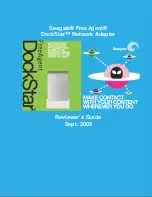
A Electrostatic Discharge
This appendix discusses ways to prevent damage to your system due to Electrostatic Discharge
(ESD). This appendix addresses the following topics:
“Handling Parts” (page 69)
“Grounding” (page 69)
Handling Parts
To prevent damage to your system, you must take precautions when setting up the system or
handling parts. A discharge of static electricity from a finger or other conductor can damage
system boards or other static-sensitive devices. This type of damage can reduce the life expectancy
of the device.
To prevent electrostatic damage, observe the following precautions:
•
Avoid hand contact; transport and store products in static-safe containers.
•
Keep electrostatic-sensitive parts in their containers until they arrive at static-free
workstations.
•
Place parts on a grounded surface before removing them from containers.
•
Avoid touching pins, leads, or circuitry.
•
Always be properly grounded when handling a static-sensitive component or assembly.
Grounding
Use the following grounding methods when handling or installing electrostatic-sensitive parts:
•
A wrist strap connected by a ground cord to a grounded workstation or computer chassis.
Wrist straps are flexible straps with a minimum of 1 megohm resistance in the ground cords.
To provide proper ground, wear the strap snug against the skin.
•
Heel straps, toe straps, or boot straps at standing workstations. Wear the straps on both feet
when standing on conductive floors or dissipating floor mats. Use conductive field service
tools.
•
A portable field service kit with a folding static-dissipating work mat.
Handling Parts
69




































